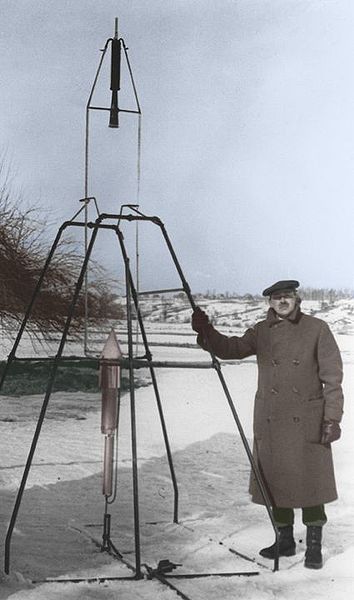I’m exchanging email with someone interested in establishing a skunk works, and they are asking some very interesting questions about the nature of innovation and the ingredients for an “environment of possibilities” …
The Current Environment
… things are … [as they are] because someone already tried unsuccessful alternatives … [This] begs the question: when it is required, how can rapid innovation be achieved?
Rapid innovation comes when the environment allows it and the skill sets enable it.
- An “environment of possibility” just means that folks are given some time to experiment with new technology, and access to the resources required to play around a bit.
Caveat: The challenge, of course, is that many folks expect the employer to allocate x% of their 40 hour work week, and provide training classes and server space to mess around with. Invest a little personal time and capital – in IT, it doesn’t take much to build a solid development / test environment and start teaching yourself!
- I believe that the “innovation skills” are in everybody. But just like any other activity, success is 10% inspiration and 90% perspiration – individuals / teams / organizations need to build their innovation muscles by doing.
Caveat: A critical requirement for this piece is has to be ok to fail. The corporate culture must expect a failure rate for new ideas – remember, if it was easy, we’d probably already have thought of it!
Making Change Happen
… I value both history and future opportunity and am seeking a balance. Is this the same in your experience?
Well, Santayana was right – “those who do not remember the past are doomed to repeat it”. But history should tell you specifically what tactics to avoid, but not necessarily what strategies will fail. Opportunity will be a mix of many things, and what was true at one time may no longer be true now. Look at imports from China – recent increases in transportation costs are making that strategy a loser for lower valued goods.
The “How-To” Questions
Process: How does … leadership successfully position a think tank or innovation team so that it is (a) buffered from mundane corporate operations and politics while (b) it remains sufficiently connected to executive leadership and operating divisions for its ideas to be acted upon? (I’m assuming that the skunk works is outside the normal corporate business structure.)

Ah, this is an incredibly important question. Skills and environment aside, I’ve seen successful innovation happen only when the team was sufficiently empowered to get ideas implemented. Sometimes this comes from executive sponsorship from just the right person – but not as often as folks think! The cynical or weak of heart prefer to wait until they are granted permission to work on a project or idea.
The “drivers” that get stuff done do so because they have all the rah rah stuff (vision, drive, energy, whatever), but they also typically have knowledge of how things work in a company. Sometimes this means a long-time employee, who has relationships with the folks that control the key people, resources, and decisions. Sometimes this means the uber-techie who already knows how the various pieces of process and technology work, so they know how to call out the resistors when obstacles are thrown in the way (no budget! no approvals! too difficult! systems can’t do that! it’s against policy! yada …). And you don’t have to be a long-term member of the organization to be successful; experiences from multiple industries, organization, technologies, etc. can all be applied by someone with imagination and drive.
So, leadership needs to stack the deck for their innovation team by …
- Carving out time in their schedules; don’t just add this to everything else on their plate – take something off!
- Provide visible executive sponsorship. You need to be able to pull that card out every once in a while (You need to make this change because the CEO said so …) – not often, but now and again …
- Staff the team with a mix of long-term and newer employees
- Identify a team leader that has the right mix of hands-on technical (this cannot be a administrative role only – they have to be able to do something!), business, and relationship-building skills. They must be able to spot the opportunity through the hype, understand how it translates to business value, and then communicate that effectively and concisely to those who need to support it
- Hold their feet to the fire – the team should have goals and objectives, it’s not a license to play!
- Let them fail! The most successful baseball players fail 70% of the time!
Also, the skunk works must remain connected to operations – they’ll have to implement the “big ideas” eventually, and it’s always good to remain grounded in reality. Make participation on the team a part-time thing for most; consider rotating different people in from various areas of the company, so everyone has a chance and all remain connected to the base business.
What lessons have you learned from the skunk works experience that you can apply to the innovation process? What broad, meta-issues and narrower specific issues has your project illuminated and solved (or at least, what questions has it posed)?
Aside from the organizational and change issues mentioned previously, I have found that innovation efforts often target things that are perceived as issues, but they are actually symptoms of more fundamental behavioral or structural problems. Web 2.0 tools and techniques are often lauded as new ways to unlock the wisdom of the crowds, connect with the new work force, or counter the flight of knowledge leaving the company upon retirement. Unfortunately, some of these efforts struggle due to what I call the Law of Large Numbers, which basically says that what works on the Internet doesn’t always work at a corporation.
Also, it always seems to boil down to “Change Management” – an overused buzzphrase that just says change is hard (especially from a vending machine). There are many ways to address this (education, repetition, participation), but management always needs to understand that corporate operating processes typically don’t catch on like consumer products – here today, gone tomorrow (look how fast the Apple iPhone turned over a new version!)





Comments (0)